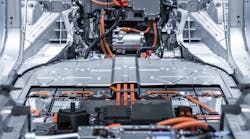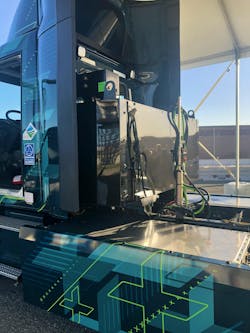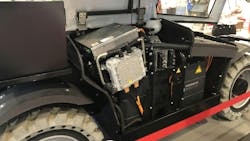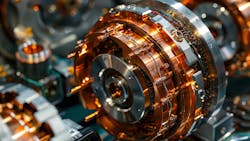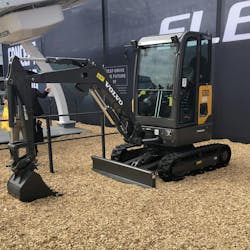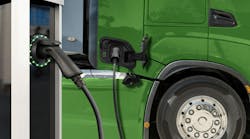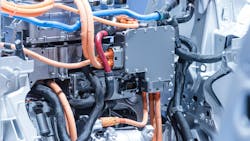System Architectures of Electrification: Benefits and Considerations
The progress of electrifying heavy-duty machinery is advancing steadily, even though electric passenger vehicles often receive more attention.
For instance, heavy-duty electric truck sales surged by 35% year-over-year in 2023, while the global market for off-highway electric vehicles (OHEVs) is projected to grow from $2.24 billion in 2023 to $8.36 billion by 2033.
These numbers clearly indicate that electrification is advancing, with no sign of stopping soon.
Instead of focusing on the external forces driving this change — such as sustainability goals, regulations, and environmental pressures — it is important to consider the internal factors. The future of both on- and off-road machinery is linked to advancements in engine technology, offering invaluable insights for OEMs and fleet managers preparing to embrace the electric era.
Types of Electrification
Electrification encompasses a complex and evolving range of technologies, each with unique architectures and applications. Understanding this in the context of heavy-duty machinery requires first understanding the tiered levels of electrical systems:
- Mild hybrid electric vehicles (MHEVs) incorporate an internal combustion engine (ICE) and electric motor in tandem to reduce fuel consumption and improve efficiency. These systems cannot run on electric power alone; instead, an electric motor assists the ICE, especially during acceleration and low-speed operation. This setup is often used in machinery where complete electrification is not viable due to power limitations or cost concerns.
- Full hybrid systems, also known as hybrid electric vehicles (HEVs), operate using either an electric motor, ICE, or both. These solutions prove particularly useful in machinery operating in stop-and-go conditions, such as construction equipment or urban delivery vehicles, where the electric motor can take over in low-speed scenarios that would otherwise result in wasteful fuel consumption and emissions.
- Plug-in hybrid electric vehicles (PHEVs) can charge via an external power source, allowing them to run solely on electric power for a limited range before switching to the internal combustion engine. The ability to recharge and continue operations without relying exclusively on fuel delivers advantages in zero-emission zones or areas with stringent air quality regulations.
- Fully electric systems rely entirely on battery energy for operation. As battery and charging technology advances, so does the viability of fully electric machinery across industries. These systems ideally suit environments where noise and emissions must be minimized, such as residential construction, indoor warehouses, and city infrastructure projects.
While fully electric systems enable zero-emission and highly efficient operations, they are not yet feasible for all machinery. In certain situations, hybridization remains the only viable solution.
For example, long-haul trucks often cover extensive distances without frequent charging opportunities. Similarly, heavy-duty construction equipment operating in remote areas may lack the necessary charging infrastructure to support fully electric operations.
These examples demonstrate that fully electric systems are best utilized in scenarios where machine duty cycles align with established charging infrastructure. Data backs up this point, with 63% of forklifts and 89% of scissor lifts operating on fully electric systems in applications such as indoor material handling and noise-sensitive, emission-restricted construction zones.
The Transformative Benefits of Electrified Machinery
Despite some considerations, the benefits of electrified machinery outweigh the challenges for many industries. Below, note three major advantages they offer.
1. Improved Efficiency and Performance
Electrified machines deliver greater efficiency than fossil-fuel-powered systems. This advantage stems from several factors:
- Energy conversion – Electric motors convert electrical energy to mechanical energy with 77% or higher efficiency rates versus ICE’s 25% average.
- Regenerative braking – Electric and hybrid systems can recover energy during deceleration and braking, storing it for later use.
- Precise power control – Electric motors offer instant torque and precise control, allowing for optimized power delivery in various operating conditions.
- Reduced energy waste – Electric systems generate less heat, have fewer moving parts, and reduce or eliminate the need for hydraulic oil. These factors result in less energy lost to friction and heat dissipation.
The cumulative impact of these advantages is substantial. Electrified machines consume less energy, require less maintenance, and offer extended operational ranges — all of which contribute to improved profitability and sustainability.
2. Lower Operating Costs Over Time
The design of electrified machinery itself minimizes operating and maintenance expenses. Unlike their ICE predecessors, electric motors do not require oil changes, engine overhauls, or frequent part replacements. That means lower long-term costs, reduced downtime, and greater machine availability.
Additionally, electricity costs are generally more stable (and often cheaper) than fossil fuels. Whereas oil and diesel prices fluctuate, electric-powered machines enable more predictable operating costs while lowering the total cost of ownership (TCO).
Over the machine’s lifespan, these savings can far exceed upfront costs, making electrification a greener, smarter choice where practical for given applications.
3. Enhanced Comfort and Usability
One of the often overlooked benefits of electrified machinery is the significant improvement in operator comfort and usability.
The shift from diesel-fueled engines to electric motors offers numerous benefits for both the work environment and machine performance, including:
- Reduced noise – Electric motors operate much more quietly than internal combustion engines, reducing operator fatigue, allowing for extended working hours in noise-sensitive areas, and facilitating better on-site communication by eliminating the need to shout over idling engines.
- Less vibration – The smoother operation of electric motors results in less vibration, once again improving operator comfort over long shifts and potentially reducing long-term machine wear.
- Improved air quality – With zero tailpipe emissions or harmful exhaust fumes, electric machines create a healthier working environment — helpful for outdoor work and indispensable for indoor operations.
These factors combine to make electric machines more suitable for various working conditions, from indoor warehouses to urban construction sites to environmentally sensitive areas.
Crucial Considerations When Transitioning to Electrified Machinery
Leveraging the benefits of electric machinery is challenging, and transitioning requires careful evaluation of the upfront costs, working environment, operational demands, and charging infrastructure and capabilities.
Initial Investment Costs
In its current state, electric machinery comes with a higher upfront cost than traditional ICE alternatives.
For OEMs and fleet managers considering the transition, the financial analysis must go beyond the price of just batteries and electric motors. Initiatives must include charging infrastructure, operational adjustments, and dedicated personnel, such as training operators, technicians, and partners familiar and experienced with the new technology.
While the advantages of electrification outweigh the initial costs, comprehensive planning is essential to ensure success.
Working Environment and Operational Demands
Electrified machines may not perform uniformly across all working conditions. Harsh environments, such as extreme temperatures or heavy-duty usage, can place unique strains on battery-powered systems.
For example, machines operating around the clock may need to leverage strategies or technologies to maintain that schedule, such as:
- Leveraging battery swapping
- Employing quick charging solutions
- Installing power-dense battery solutions.
Regardless, detailed simulations of different operational environments are a critical first step in evaluating performance and avoiding underperformance in such demanding scenarios.
Infrastructure and Charging Capabilities
Despite considerable government investment worldwide, one of the most important considerations remains the availability of charging infrastructure. Machines operating in remote areas may face difficulties accessing reliable charging stations, necessitating additional investments in on-site charging capabilities.
OEMs need to evaluate the type of chargers needed (e.g., fast versus standard) and the time required to fully recharge the machinery, which could impact operational schedules and downtime.
The Value of Consulting a System Integrator
Navigating electronic components and charging infrastructure might seem unfamiliar to legacy OEMs who are used to engineering diesel engines. Each application of electrification requires a tailored solution that balances performance, efficiency, and cost.
This is where a system integrator’s expertise becomes invaluable. System integrators ensure all components of an electric machine work seamlessly together for optimal performance, offering specialized expertise in:
- Comprehensive system knowledge – System integrators have an in-depth understanding of how various components — motors, batteries, power electronics, and control systems — interact within an electrified powertrain.
- Simulation expertise – They can develop and run sophisticated simulations for specific duty cycles, environmental conditions, and performance requirements.
- Component selection – Based on simulation results, system integrators can recommend the optimal combination of components to avoid costly underperformance or over-engineering.
- Custom solutions – For unique applications, system integrators can design custom solutions that may involve novel combinations of off-the-shelf components or entirely new designs.
- Integration and testing – They oversee the integration of various subsystems and conduct thorough testing to ensure reliability and performance in real-world conditions.
- Regulatory compliance – System integrators stay current with relevant regulations and standards, ensuring the final product meets all necessary certifications.
The right system integrator ensures these parts work together, leveraging data-driven simulations to perfectly align components with the application.
Architecting a Sustainable Future with Electrification
Machinery electrification offers numerous advantages, from improved efficiency and reduced emissions to lower operational costs and increased versatility. However, not every application can be fully electrified just yet.
It’s crucial to assess each situation individually, considering factors such as working conditions, power requirements, and cost. Consulting with a qualified system integrator is often the best way to get started, eliminating costly backtracking while finding the ideal architecture for project needs.
With each passing year delivering so many breakthroughs in electrification, the opportunity cost of waiting might be higher than the upfront investment.
This article was written and contributed by Paolo Patroncini, General Manager of 4e Consulting, a ZAPI GROUP company.
